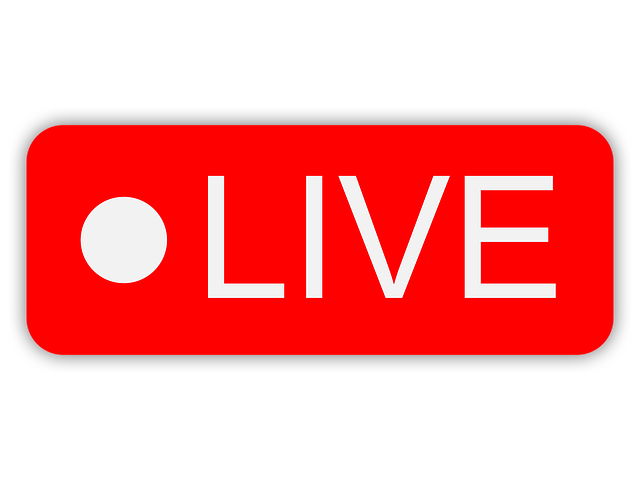Live videos are fun. Search engines love them. They’re fresh. They’re in vogue. And they’re much more interactive than good old pre-recorded videos. But with YouTube live streams, reaching your target audience isn’t easy. After all, YouTube isn’t like any other live streaming platform. It’s a beast all its own. So when it comes to YouTube live streaming, many things come into play.
In this article, we’ll take you through the 5 tips one must know before Live Streaming on YouTube. But first, let’s look at what’s important to YouTube and how the algorithm works.
What is important for YouTube?
YouTube’s algorithm is based solely on engagement. By tracking the viewing habits of its users, the platform collects information about the videos they watch, what they ignore, their likes (and dislikes), how much time they spend with a video, their “not interested” feedback, etc.
This information forms the basis for search results and recommendation streams on the platform. Users are shown the most relevant videos on their home pages, in search results, in trending videos, in suggested videos, and in the subscription area. These are the videos they’re most likely to watch at a given time.
This may be the case, for example, when a user is at work on their lunch break and wants to consume shorter content. The platform will then recommend a shorter form of content to them. Or if they’re looking for longer content, YouTube’s recommendation engine will suggest it to them.
The same goes for the devices on which they watch the content. For example, YouTube tracks content consumption on different devices. In addition to device types and location, the platform also tracks:
the time you’re most active on those devices, the content you watch, and your average viewing time
YouTube uses all of this information to tap into this vast pool of content and figure out what you want to watch at any given time.
Another multiplier is the “suggested videos.”
These appear on the right side of the Watch page under “Next” and the next video that “plays automatically. “
When you watch a video on the YouTube mobile app, they also appear below the video you’re watching.
The idea behind suggested videos is that YouTube detects what kind of content you’re interested in and shows you related content from other channels. These can be from the channels you already interact with, but they don’t have to be. But based on your activity and how it compares to the “like” activity of other YouTube users, the platform recommends content.
So instead of posting a livestream with the idea that YouTube will promote it no matter what, think the other way around and focus on your “audience” because that’s how YouTube actually works.
Now let’s get to the things you need to know when it comes to YouTube live streaming.
1. Live stream for replay
Of course, a live event is awesome. People hang out in the stream, interact in chat – it’s all pretty cool. However, most viewers come after the live stream is over.
That’s why it’s important to start the stream as soon as possible when you announce it. The best way to avoid making your audience wait is to set a “countdown timer”.
Remember that YouTube can highlight your live stream as a “suggested video” after you broadcast it. And it’ll become a saved video content for those who will watch your video after the broadcast. So provide them with an experience similar to a pre-recorded video by providing repeat value for your stream. This will make a big difference in the way your audience responds to your content.
2. Optimize
It’s common for live streamers to use the same template, thumbnail, or title when they go live. And that’s way too cliché, too. The purpose of your live streams is to amplify your brand. So it makes sense to put a little effort into telling viewers what your live stream is about.
When you give context to what your stream is about, YouTube uses this as a discovery mechanism and gives you the opportunity to show up in search.
To grab your audience’s attention, optimize your title, thumbnail, description, and tags – just like you’d with any other video content.
4. Edit your YouTube livestreams
Unlike most other platforms, YouTube offers the ability to edit your live streams. So, use the YouTube editor to improve your live streams for replay.
Enable the Live Chat Replay feature to give your viewers a simulated live chat experience during replay.
If your live stream is content for a general audience and it’s not specifically for kids, you should mark it as “Not Made for Kids,” which is pretty important for monetization. Once you’ve done that, go to the advanced settings of your stream in YouTube Studio and choose the caption certification, the language of your live stream, and the monetization options you want.
5. Let people see more of your content
Another important factor YouTube looks at for a satisfying viewing experience is how much more of your content people see.
When you’re live streaming, you don’t want people to leave the stream. However, once your broadcast ends, it makes sense to include an end screen in the replay of your live stream. YouTube cards and end screens with calls to action (CTAs) that link to other videos, playlists, or websites are a fantastic way to lead your audience to more content.
Another great way is to add a comment to your YouTube livestream replay and pin it to encourage more comments and engagement. And while you’re at it, leave a link to one of your videos or playlists in your pinned comment. This will give your viewers an idea of what to watch next and keep them on your channel longer.
Read more on Mezink, and download now!
